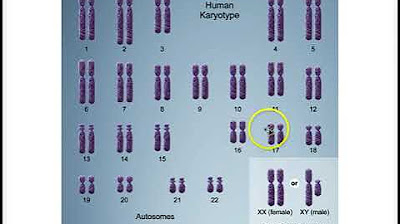Formation of DNA Double Helix
Summary
TLDRThis video explores the intricate biological reactions within our bodies, focusing on the formation of the DNA double helix. Key factors influencing these reactions include intermolecular interactions such as hydrogen bonds, London dispersion forces, and the hydrophobic effect, which stabilize the structure. The role of water as a solvent enhances stability by interacting with phosphate groups. Thermodynamic principles explain how despite a decrease in system entropy during DNA formation, the reaction remains spontaneous due to energy release. The significance of pH will be discussed in future lectures, further elaborating on its impact on biochemical processes.
Takeaways
- 😀 Biological reactions in our body are influenced by various factors that determine the reaction pathways and final structures of biomolecules.
- 😀 Intermolecular bonds, such as hydrogen bonds and London dispersion forces, play crucial roles in stabilizing biological structures like DNA.
- 😀 Water is the universal solvent for biological reactions, significantly affecting the pathways and structures of molecules due to its properties.
- 😀 Thermodynamics govern all reactions, adhering to the first law (energy conservation) and the second law (increased entropy in the universe).
- 😀 The pH of a solution can influence the pathway of reactions and the final structure of biological molecules.
- 😀 The formation of the DNA double helix is a prime example of how intermolecular interactions stabilize biological structures.
- 😀 Hydrogen bonds form between complementary bases in DNA, providing stability to the double helix structure.
- 😀 The stacking of base pairs in DNA leads to London dispersion forces, which further stabilize the molecule.
- 😀 The hydrophobic effect keeps nonpolar bases inside the double helix, away from polar water molecules, contributing to the DNA's stability.
- 😀 The entropy of a system can decrease during certain reactions, but overall spontaneity is determined by the change in the entropy of the universe.
Q & A
What are the primary factors influencing biochemical reactions?
-The primary factors include intermolecular bonds, the solvent in which the reaction occurs, and thermodynamic principles.
How do intermolecular bonds affect the structure of biological molecules?
-Intermolecular bonds, such as hydrogen bonds and London dispersion forces, play a crucial role in stabilizing the structure of biological molecules, like the DNA double helix.
What is the role of water in biochemical reactions?
-Water acts as the universal solvent for biochemical reactions, influencing the reaction pathway and stabilizing the structures of biomolecules through interactions with polar and nonpolar components.
What is the significance of hydrogen bonds in DNA structure?
-Hydrogen bonds between complementary bases in DNA are critical for forming the double helix structure, providing stability and ensuring accurate base pairing.
How do London dispersion forces contribute to DNA stability?
-London dispersion forces arise from temporary dipoles in nonpolar bases that are stacked on top of one another, providing additional stability to the DNA double helix.
What is the hydrophobic effect, and how does it relate to DNA structure?
-The hydrophobic effect describes the tendency of nonpolar bases in DNA to avoid interaction with polar water, which helps sequester them within the double helix, contributing to its structural integrity.
How do thermodynamic principles apply to the formation of the DNA double helix?
-The formation of the DNA double helix decreases the entropy of the system, but the reaction is still spontaneous due to the energy released, which increases the entropy of the surroundings, resulting in a positive change in the universe's entropy.
What happens to the entropy of the system when DNA strands form a double helix?
-The entropy of the system decreases when the strands form a double helix because the process leads to a more ordered state compared to the separate single strands.
What is the first law of thermodynamics, and how does it apply to biochemical reactions?
-The first law states that energy is conserved; it can be transformed but not created or destroyed. In biochemical reactions, this means the total energy remains constant throughout the process.
Why is understanding the pH of a solution important in biochemical reactions?
-The pH of a solution can influence the reaction pathway and the structure of biological molecules, impacting their stability and interactions.
Outlines

This section is available to paid users only. Please upgrade to access this part.
Upgrade NowMindmap

This section is available to paid users only. Please upgrade to access this part.
Upgrade NowKeywords

This section is available to paid users only. Please upgrade to access this part.
Upgrade NowHighlights

This section is available to paid users only. Please upgrade to access this part.
Upgrade NowTranscripts

This section is available to paid users only. Please upgrade to access this part.
Upgrade Now5.0 / 5 (0 votes)





